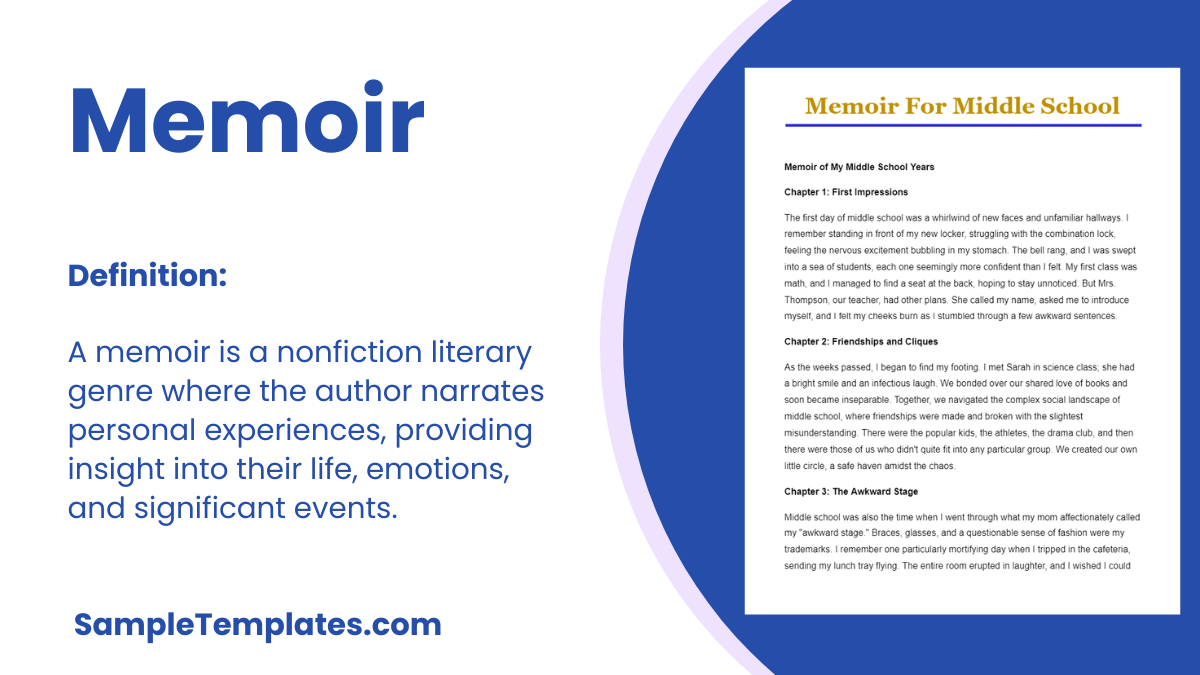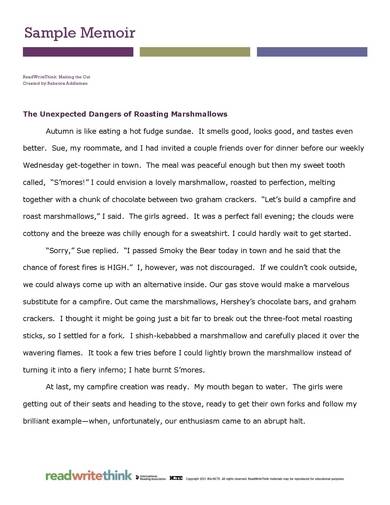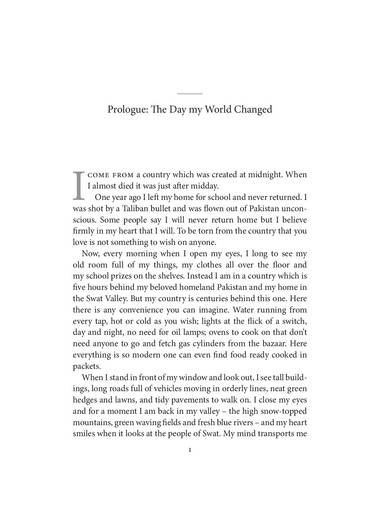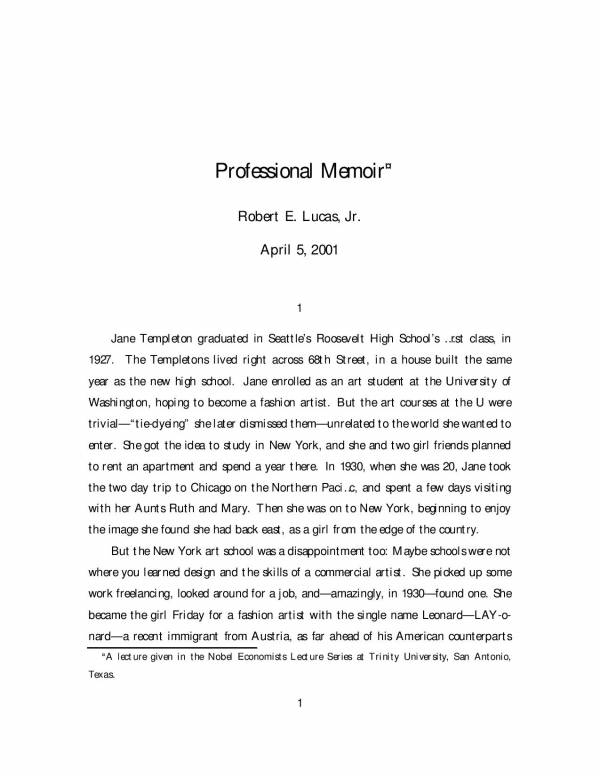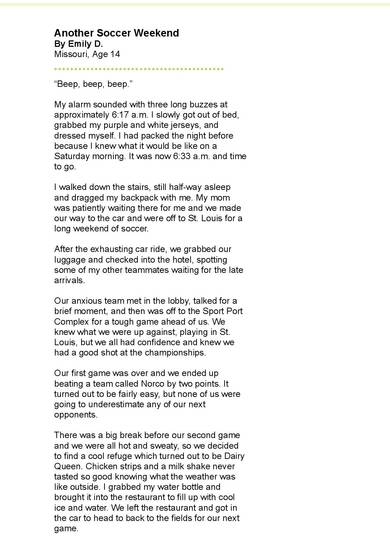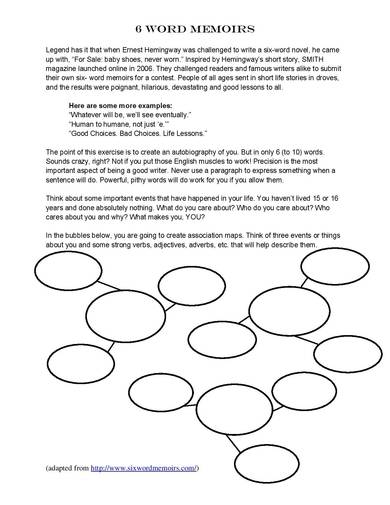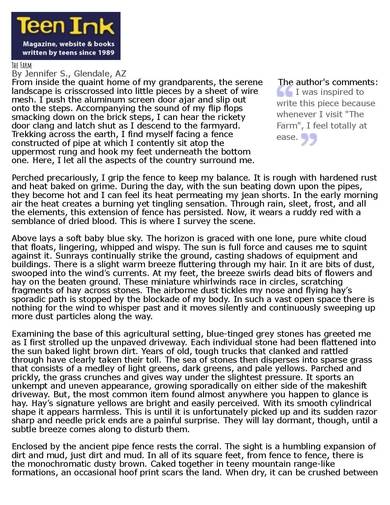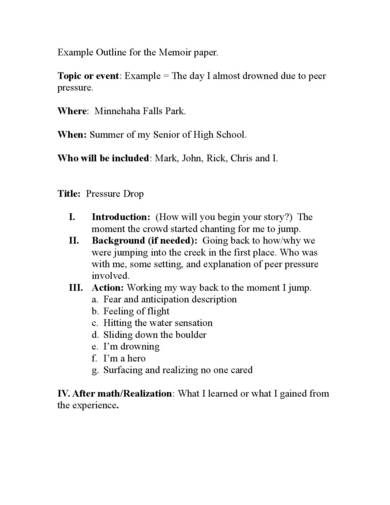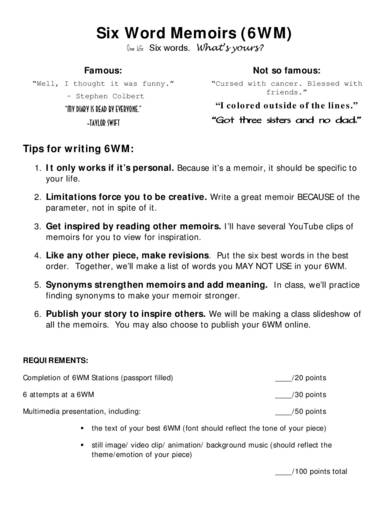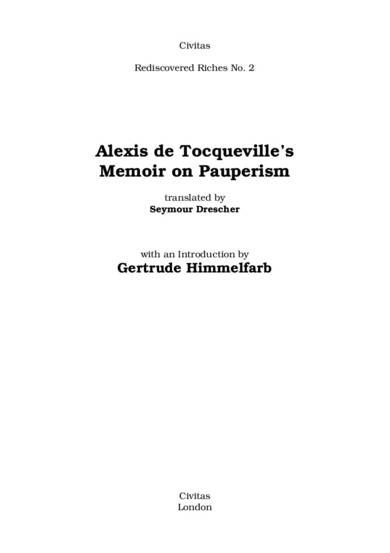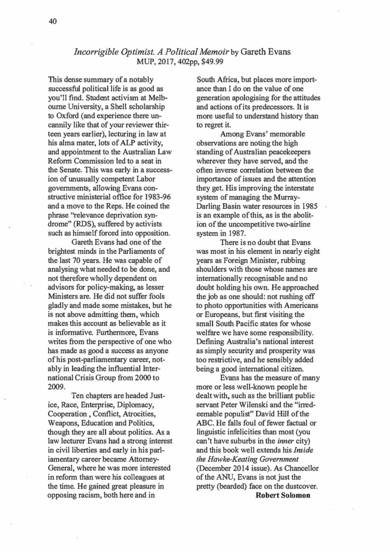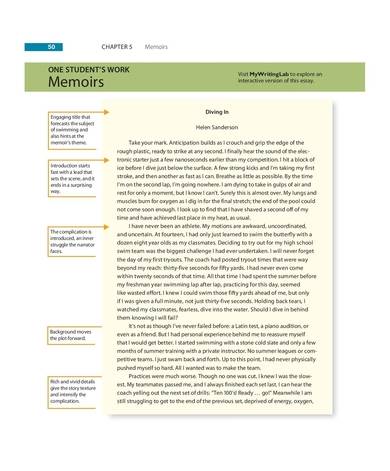Memoirs of a Geisha is a novel turned into an epic drama film in 2005. Memoir is not a new word, but it may be the first time that some people may have heard or known that such a word exists. If you think of this word, the very first thing that would come to mind would be memories. A memoir is a collection of the writer’s memories. It consists of details of the events that took place in both the writer’s public and private life. It is also called a personal essay, so if you are knowledgeable about essay writing, then you should be able to pull off creating this one easily.
Memoir, Biography, and Autobiography: How Are They Different?
When you want to tell a story about your life, you either write a memoir, a biography, or an autobiography. While they help you tell your life story, they don’t necessarily mean that they are all the same. That is just their similarity. So how are they different? Before you confuse yourself about which is which, we will give you the details that set each one of them apart.
Let’s start with biographies as they are the most common among the three. We all know that a biography is a story of the life of a particular individual that is written by someone else. The story that a biography tells covers the whole life or the history of the life of that individual, which you can find in biography samples.
In an autobiography, the writer tells the story of their life, which makes it different from that of a biography. It’s just like the school essays we used to write about ourselves. And if you have checked out some autobiography samples, you’ll notice that they’re all written from the first-person point of view. Well, that’s pretty easy considering that we are quite familiar with both biography and autobiography.
While both are used to tell the life history of an individual, a memoir focuses on significant event plan of a person’s life. It acts as a collection of memories that one has during a specific period of their life. It only tells the story of a significant memory and not the entire life of the individual. Memoirs can be also be both written by someone else or by oneself.
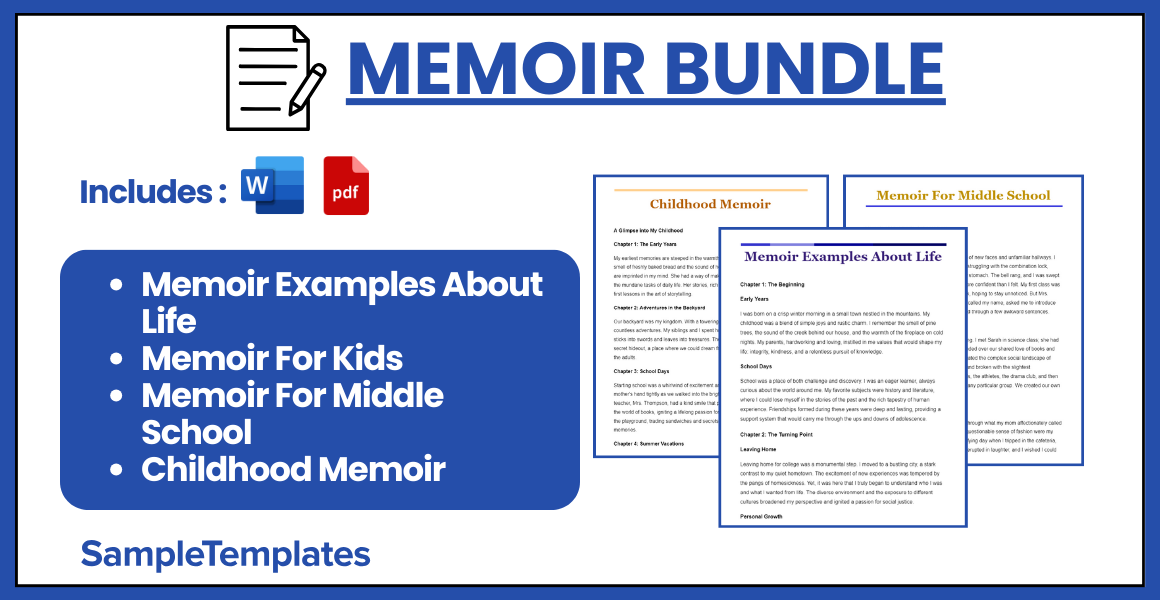
Memoir Examples About Life
Chapter 1: The Beginning
Early Years
I was born on a crisp winter morning in a small town nestled in the mountains. My childhood was a blend of simple joys and rustic charm. I remember the smell of pine trees, the sound of the creek behind our house, and the warmth of the fireplace on cold nights. My parents, hardworking and loving, instilled in me values that would shape my life: integrity, kindness, and a relentless pursuit of knowledge.
School Days
School was a place of both challenge and discovery. I was an eager learner, always curious about the world around me. My favorite subjects were history and literature, where I could lose myself in the stories of the past and the rich tapestry of human experience. Friendships formed during these years were deep and lasting, providing a support system that would carry me through the ups and downs of adolescence.
Chapter 2: The Turning Point
Leaving Home
Leaving home for college was a monumental step. I moved to a bustling city, a stark contrast to my quiet hometown. The excitement of new experiences was tempered by the pangs of homesickness. Yet, it was here that I truly began to understand who I was and what I wanted from life. The diverse environment and the exposure to different cultures broadened my perspective and ignited a passion for social justice.
Personal Growth
College was not just about academics; it was a period of profound personal growth. I joined various clubs and organizations, each one teaching me something new about leadership, teamwork, and resilience. Late-night discussions with friends about philosophy, politics, and the future were as educational as any lecture. These formative years laid the groundwork for my future endeavors.
Chapter 3: The Journey
Career Beginnings
Entering the workforce was a mix of excitement and uncertainty. My first job was at a nonprofit organization, where I quickly realized the impact of my work on the community. The satisfaction of making a difference, no matter how small, was immensely rewarding. However, the challenges were many—balancing passion with practicality, managing relationships, and navigating office politics.
Love and Loss
It was during this time that I experienced the heights of love and the depths of loss. Falling in love brought a new dimension to my life, teaching me about vulnerability, compromise, and the beauty of shared dreams. Conversely, losing loved ones to illness and tragedy brought me face to face with grief and the harsh realities of life. These experiences, though painful, strengthened my resolve and deepened my empathy for others.
Chapter 4: A New Chapter
Midlife Reflections
As I reached midlife, I found myself at a crossroads. The career that once fulfilled me now felt like a series of motions. I yearned for something more, something that resonated with my core values and passions. This led me to make bold decisions—quitting my job, traveling the world, and immersing myself in new cultures and experiences.
Rediscovering Purpose
During my travels, I rediscovered my purpose. I met incredible people, each with their own stories of triumph and struggle. These encounters reignited my passion for storytelling and advocacy. I began writing, sharing my experiences and insights with a broader audience. This new direction brought a sense of fulfillment and a renewed sense of purpose.
Chapter 5: Looking Forward
Embracing Change
Life, I have learned, is a constant state of flux. Embracing change, rather than resisting it, has been a key lesson. Every experience, whether joyous or painful, has contributed to my growth. The journey is far from over, and I look forward to the adventures and challenges that lie ahead.
Legacy and Hope
As I reflect on my life, I am filled with gratitude. The people I’ve met, the places I’ve been, and the experiences I’ve had have all shaped me. My hope is that my story can inspire others to pursue their passions, embrace change, and live authentically. In the end, it is not the accolades or achievements that matter, but the impact we have on the lives of others and the legacy we leave behind.
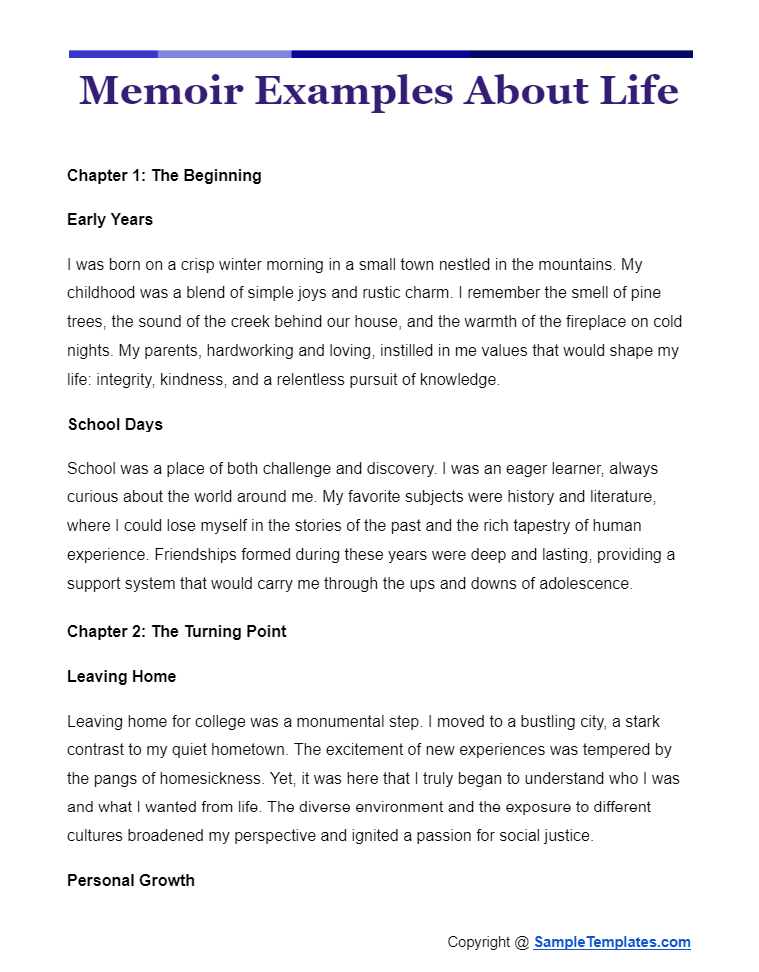
Memoir For Kids
My Magical Childhood Adventures
Chapter 1: The Enchanted Forest
When I was a kid, my world was full of magic and wonder. Our house was near an old forest, which I believed was enchanted. Every day after school, I would run to the forest, imagining myself as a brave explorer on a quest. The tall trees were my guardians, their leaves whispering secrets of the forest’s ancient past. I would spend hours there, pretending to discover hidden treasures and magical creatures.
Chapter 2: The Great Treehouse
One summer, my friends and I decided to build the greatest treehouse ever. We gathered wood, nails, and a lot of imagination. With the help of my dad, we constructed a treehouse high up in a sturdy oak tree. It became our secret hideout, where we held meetings, planned adventures, and even camped out under the stars. We called it “The Sky Fort” and it was our kingdom in the sky.
Chapter 3: The Mystery of the Lost Treasure
One rainy afternoon, while exploring the attic, I found an old, dusty map. It had strange markings and a big “X” in the middle. My heart raced with excitement – it was a treasure map! I called my friends, and we embarked on a thrilling quest to find the hidden treasure. We followed the clues, which led us through the forest, across the creek, and finally to an old, hollow tree. Inside, we found a rusty box filled with old coins and trinkets. It wasn’t gold, but to us, it was the most valuable treasure in the world.
Chapter 4: The Time I Met a Dragon
One day, while exploring deeper into the forest than ever before, I stumbled upon a small, shimmering pond. As I approached, I saw something incredible – a tiny, shimmering dragon! It was no bigger than my hand and had scales that sparkled like jewels. The dragon looked at me with curious eyes and we became instant friends. I named him Sparky. Every day, I would visit Sparky and we would go on mini-adventures, exploring hidden corners of the forest and sharing stories.
Chapter 5: The Great School Talent Show
In the fifth grade, our school announced a talent show. I decided to perform a magic act with the help of my little sister. We practiced for weeks, perfecting our tricks and making a sparkly costume for her. On the day of the show, we were both nervous but excited. Our act went perfectly, and the audience cheered loudly. We won first place, and it felt like the best day ever.
Chapter 6: The Adventures of Middle School
Middle school was a whole new world, full of challenges and new experiences. I joined the science club and made new friends who loved adventures as much as I did. Together, we built rockets, created cool experiments, and even won the school science fair. We called ourselves “The Brainy Bunch” and promised to stay friends forever.
Chapter 7: The Farewell to the Enchanted Forest
As I grew older, we moved to a new town. Saying goodbye to the enchanted forest was hard, but I knew it would always be a part of me. I took with me all the wonderful memories and the magic of my childhood adventures. In my new town, I made new friends and discovered new places to explore. The magic was still there, as long as I believed in it.
Epilogue: Keeping the Magic Alive
Even though I am older now, I still carry the spirit of those magical adventures with me. I tell my stories to my younger cousins, hoping to inspire them to find their own enchanted forests and hidden treasures. Childhood may be a memory, but the magic lives on forever in our hearts.
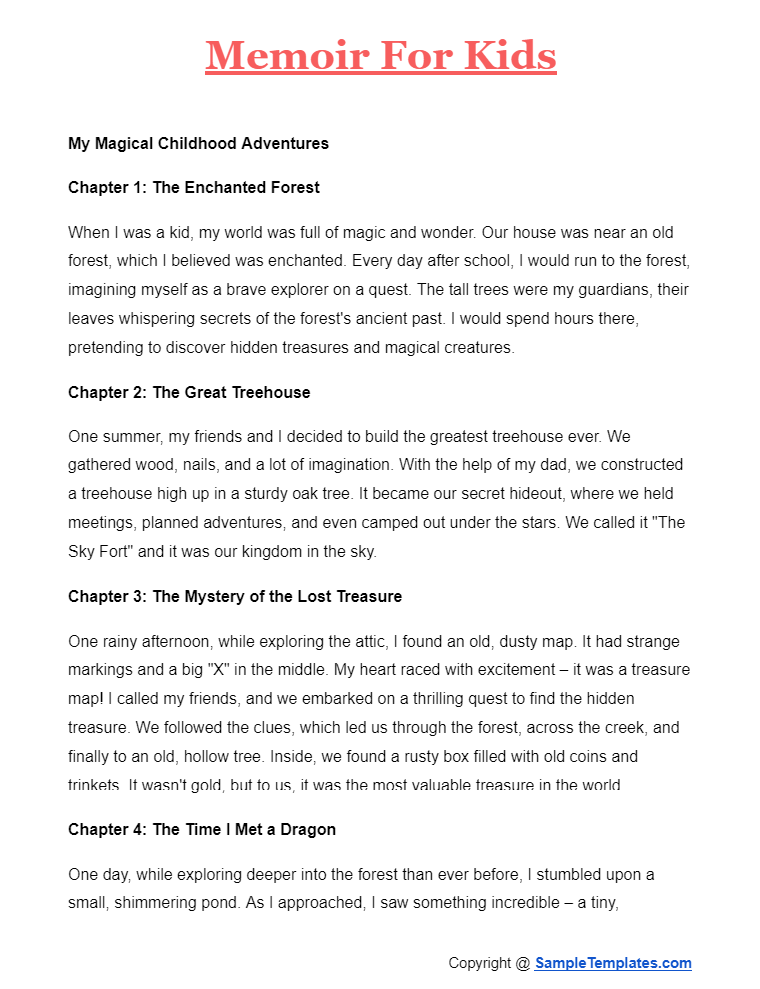
Memoir For Middle School
Memoir of My Middle School Years
Chapter 1: First Impressions
The first day of middle school was a whirlwind of new faces and unfamiliar hallways. I remember standing in front of my new locker, struggling with the combination lock, feeling the nervous excitement bubbling in my stomach. The bell rang, and I was swept into a sea of students, each one seemingly more confident than I felt. My first class was math, and I managed to find a seat at the back, hoping to stay unnoticed. But Mrs. Thompson, our teacher, had other plans. She called my name, asked me to introduce myself, and I felt my cheeks burn as I stumbled through a few awkward sentences.
Chapter 2: Friendships and Cliques
As the weeks passed, I began to find my footing. I met Sarah in science class; she had a bright smile and an infectious laugh. We bonded over our shared love of books and soon became inseparable. Together, we navigated the complex social landscape of middle school, where friendships were made and broken with the slightest misunderstanding. There were the popular kids, the athletes, the drama club, and then there were those of us who didn’t quite fit into any particular group. We created our own little circle, a safe haven amidst the chaos.
Chapter 3: The Awkward Stage
Middle school was also the time when I went through what my mom affectionately called my “awkward stage.” Braces, glasses, and a questionable sense of fashion were my trademarks. I remember one particularly mortifying day when I tripped in the cafeteria, sending my lunch tray flying. The entire room erupted in laughter, and I wished I could disappear. But Sarah was there, helping me up and cracking a joke that made me smile despite the embarrassment.
Chapter 4: Discovering Passions
It was in middle school that I discovered my passion for writing. Mrs. Reed, my English teacher, assigned us a creative writing project, and I poured my heart into it. When she handed back my paper with an “A” and a note praising my storytelling, I felt a spark ignite inside me. I joined the school newspaper and started writing short stories in my spare time. It was a way to escape, to explore different worlds and express the thoughts and feelings I couldn’t always articulate in real life.
Chapter 5: The Lessons Learned
Middle school was a time of growth and self-discovery. I learned that true friends are those who stand by you through the ups and downs. I learned that it’s okay to be different, that what makes us unique is also what makes us special. And I learned to embrace my passions, to pursue what makes me happy, even if it isn’t always the popular choice.
As I look back on those years, I realize that middle school wasn’t just about academics and socializing. It was about finding myself, understanding who I was and who I wanted to be. And while there were plenty of awkward moments and challenges, there were also friendships, laughter, and the beginning of dreams that would shape my future.
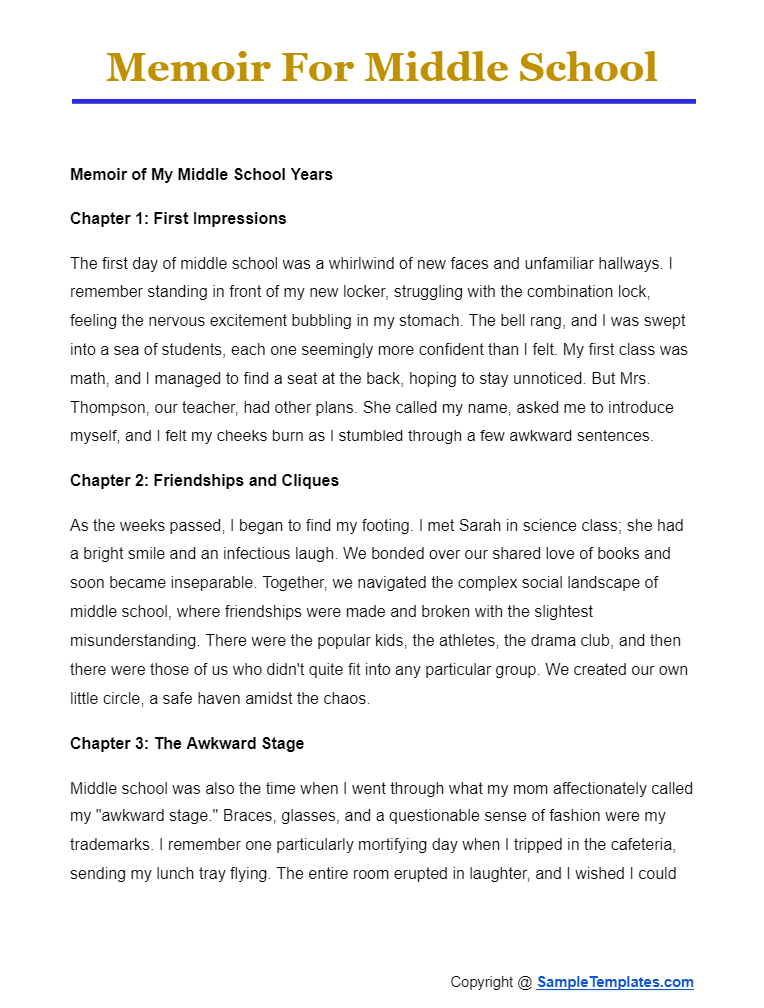
Childhood Memoir
A Glimpse into My Childhood
Chapter 1: The Early Years
My earliest memories are steeped in the warmth of my grandmother’s kitchen. The smell of freshly baked bread and the sound of her humming as she kneaded the dough are imprinted in my mind. She had a way of making every moment feel magical, even the mundane tasks of daily life. Her stories, rich with folklore and family history, were my first lessons in the art of storytelling.
Chapter 2: Adventures in the Backyard
Our backyard was my kingdom. With a towering oak tree as my castle, I embarked on countless adventures. My siblings and I spent hours playing make-believe, turning sticks into swords and leaves into treasures. The treehouse my father built became our secret hideout, a place where we could dream freely, away from the watchful eyes of the adults.
Chapter 3: School Days
Starting school was a whirlwind of excitement and anxiety. I remember clutching my mother’s hand tightly as we walked into the brightly decorated classroom. My first teacher, Mrs. Thompson, had a kind smile that put me at ease. She introduced me to the world of books, igniting a lifelong passion for reading. The friendships I formed on the playground, trading sandwiches and secrets, remain some of my most cherished memories.
Chapter 4: Summer Vacations
Summers were a time of exploration. Our family trips to the countryside were filled with laughter and discovery. We would hike through the woods, swim in the clear, cool streams, and gather around the campfire at night. My father would tell ghost stories, his voice rising and falling with dramatic flair, sending shivers down our spines. These trips taught me to appreciate nature’s beauty and the simple joys of life.
Chapter 5: Lessons Learned
Childhood was not without its challenges. I recall the first time I experienced loss—the passing of our family dog, Max. His absence left a void that was difficult to understand at such a young age. My parents, in their gentle way, helped me navigate the complex emotions of grief, teaching me resilience and empathy.
Chapter 6: Growing Up
As I grew older, the simplicity of childhood began to give way to the complexities of adolescence. The lessons learned in those early years, however, provided a solid foundation. The values of kindness, curiosity, and perseverance that my family instilled in me have guided me through life’s many twists and turns.
Epilogue: Reflection
Looking back, my childhood was a tapestry of joy, wonder, and growth. Each memory, whether of triumph or tribulation, has contributed to the person I am today. The love and support of my family, the adventures we shared, and the lessons learned along the way are treasures I hold close to my heart.
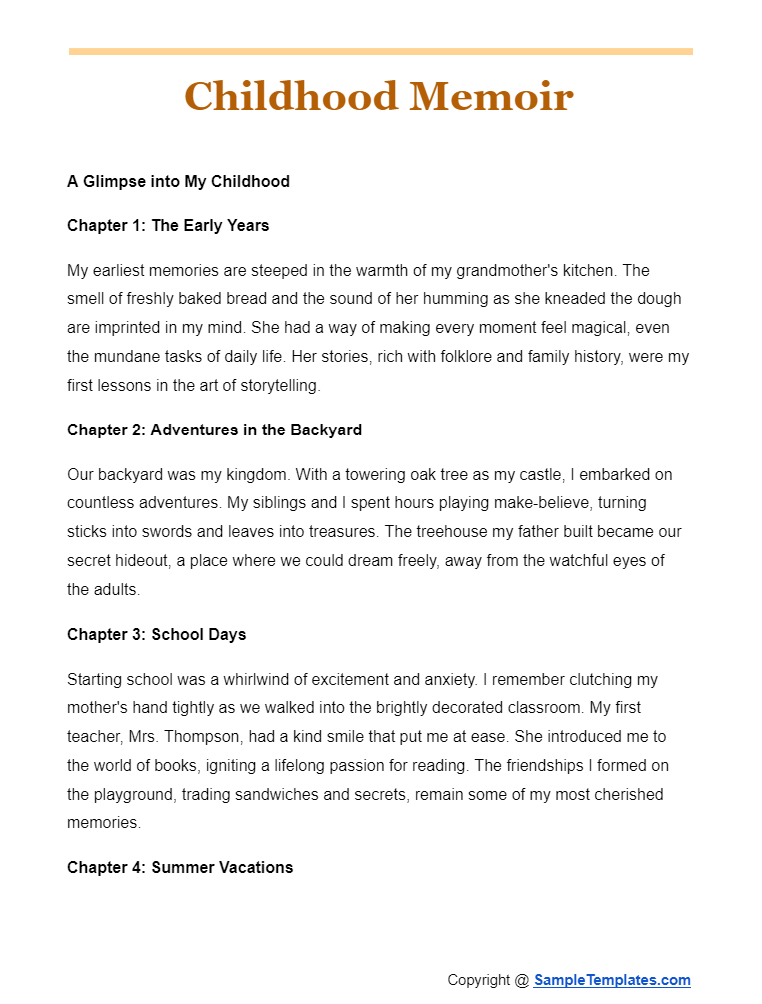
Browse More Templates On Memoir
Memoir Samples
Here are memoir samples that will help you get familiar with the different types of memoirs and help you choose the type of memoir that is right for you.
1. Memoir Template
2. Sample Mentor-Written Memoir Template
Types of Memoirs
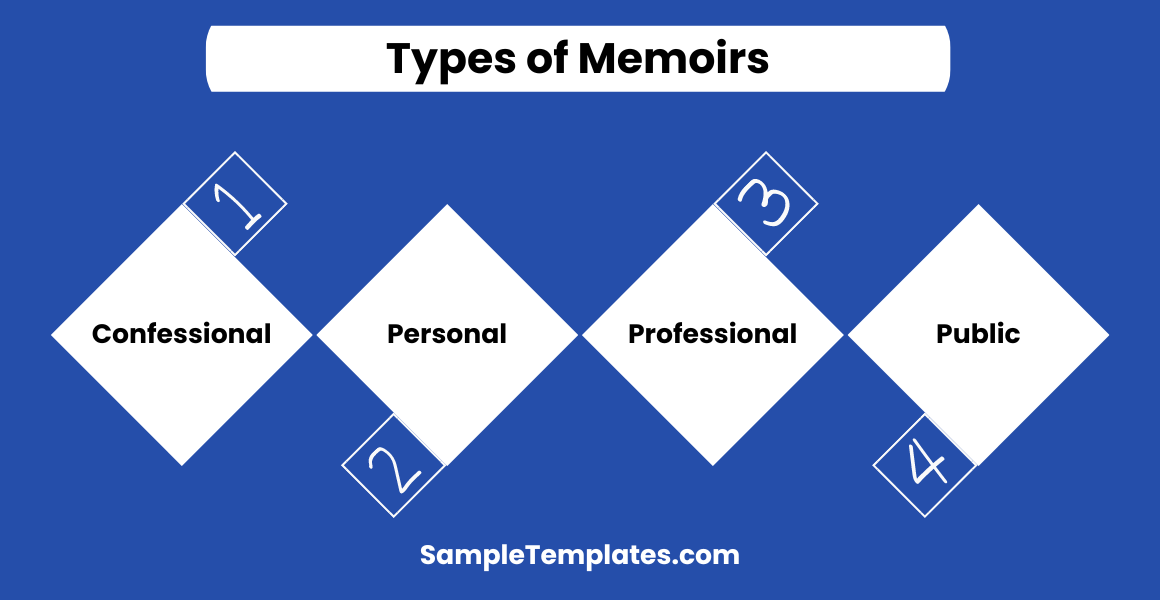
Anybody can write a memoir. You just need to figure out what type of memoir you should be writing prior to preparing your details. There are seven types of memoirs, namely confessional memoirs, personal memoirs, portrait memoirs, professional memoirs, public memoirs, transformational memoirs, and travel memoirs. Knowing each of the seven types of memoirs will help you provide a detailed life story or narrative.
Confessional Memoirs
If you have a confession to tell about some part of your life, then you should write this type of memoir. A confessional memoir consists mostly of the decisions that the writer considers as good and bad. In this type of memoir, the writer discusses and talks about the choices they have made, how it affected them and other involved individuals, and how it helped change their lives for the better (or worse).
Personal Memoirs
Can’t decide on what memoir to write? Then write a personal memoir instead. It is the most popular type of memoir which focuses only on a certain period or event of the writer’s own life. As a writer, you get to choose which memory to write about.
Professional Memoirs
A professional memoir is the type of memoir written to tell about one’s professional life or career. This type of memoir is created to keep a record of historical events.
Public Memoirs
Celebrities, artists, influencers, and other people who live their lives in a very public way are the group of people who get associated with public memoirs. The type of memoir aims to let their readers know more about who the writer really is, aside from what is being shown to them in public.
Portrait Memoirs
Among the seven types of memoirs, this is the only type that is written by another person. It does not contain the feelings and thoughts of the writer, but it documents the experiences, events, and the researched information about that person.
Transformational Memoirs
Transformational memoirs include religion and spirituality, one’s coming of age, and overcoming challenges or circumstances.
Travel Memoirs
A travel memoir is where writers express their feelings and experiences while traveling. Although it provides details of the personal adventures of the writer, it is still different from that of travel blogs. A travel memoir is where you can read about the writer’s challenges while traveling, as well as how they were able to overcome those challenges.
3. Professional Memoir Template
4. Sample Memoir About Soccer Template
5. Basic Six Word Memoir Template
How to Write a Memoir?
Writing a memoir involves reflecting on your life experiences and sharing them in a way that resonates with readers. Here’s a step-by-step guide to help you write your memoir:
1. Find Your Focus
- Identify a Theme: Determine the central theme or message of your memoir. This could be a specific period, experience, or aspect of your life.
- Narrow Down: Focus on particular events that support your theme rather than trying to cover your entire life.
2. Gather Your Memories
- Brainstorm: Write down key memories that relate to your theme. Include significant moments, people, places, and emotions.
- Research: Revisit old photos, journals, letters, and talk to family members to jog your memory and gather details.
3. Create an Outline
- Structure: Decide on the structure of your memoir. It can be chronological, thematic, or a mix of both.
- Chapters: Break down your story into chapters or sections. Each chapter should have a clear focus and contribute to the overall narrative.
4. Write Your First Draft
- Be Honest: Authenticity is crucial in a memoir. Be truthful about your experiences and emotions.
- Show, Don’t Tell: Use descriptive language to paint a picture for your readers. Show your experiences through actions, dialogues, and sensory details.
- Voice: Write in your own voice. Your personality should come through in your writing.
5. Edit and Revise
- Take a Break: After completing your first draft, take a break before revising. This will give you fresh perspective.
- Edit Ruthlessly: Cut out unnecessary details and focus on the essence of your story. Ensure each chapter supports your theme.
- Feedback: Share your draft with trusted friends, family, or a writing group for feedback. Consider hiring a professional editor for a polished final draft.
6. Finalize Your Manuscript
- Proofread: Carefully proofread for grammar, spelling, and punctuation errors.
- Format: Ensure your manuscript is properly formatted according to publishing standards.
7. Publish and Share
- Choose a Publishing Path: Decide whether you want to pursue traditional publishing, self-publishing, or digital publishing.
- Promote: Share your memoir with the world through marketing, social media, and book events.
6. Student Memoir Template
7. Memoir Paper Outline Template
Tips For Writing a Memoirs
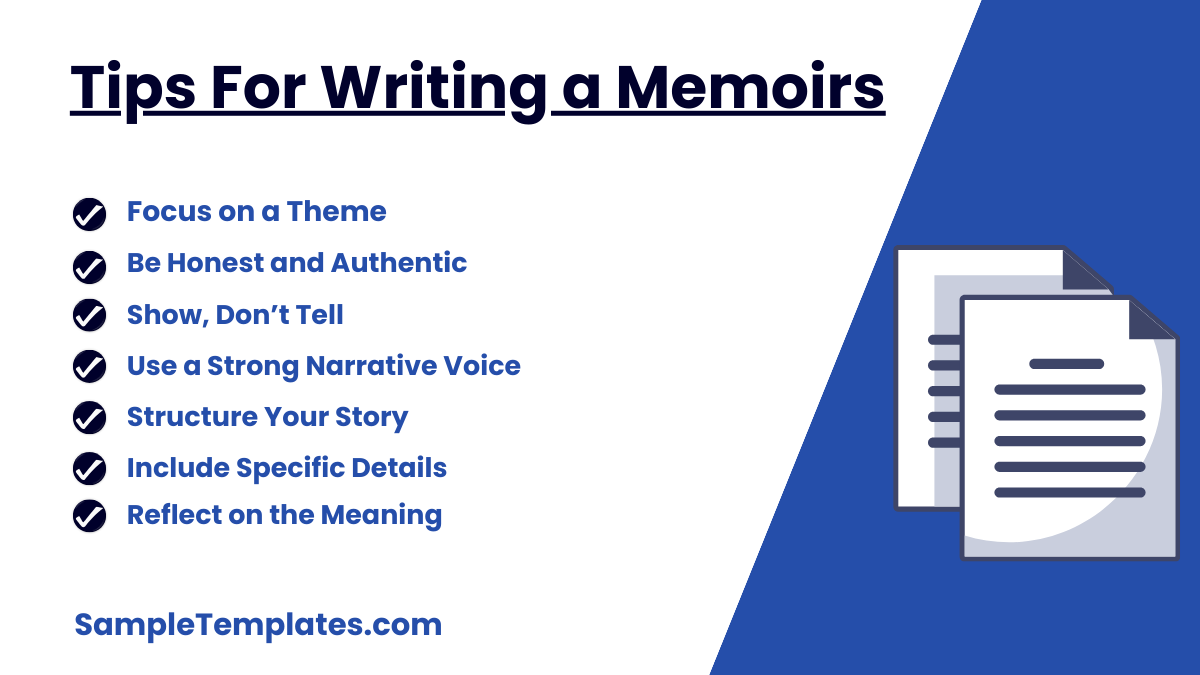
1. Focus on a Theme
- Identify the central theme or message of your memoir. This could be a specific period, event, or aspect of your life that you want to highlight. Keep this theme in mind throughout your writing to maintain coherence and focus.
2. Be Honest and Authentic
- Authenticity is key to a compelling memoir. Be truthful about your experiences, emotions, and reflections. Readers connect with genuine stories, even if they involve difficult or painful truths.
3. Show, Don’t Tell
- Use vivid descriptions, dialogue, and sensory details to show your experiences rather than simply telling them. This approach makes your story more engaging and immersive for readers.
4. Use a Strong Narrative Voice
- Your unique voice should shine through in your writing. Write in a style that feels natural to you and reflects your personality. This makes your memoir more relatable and memorable.
5. Structure Your Story
- Organize your memoir with a clear structure. Whether you choose a chronological order, thematic sections, or a combination, ensure each part of your story flows logically and supports your overall theme.
6. Include Specific Details
- Specific details make your story vivid and believable. Instead of general statements, include particular events, names, places, and emotions to bring your memories to life.
7. Reflect on the Meaning
- Go beyond recounting events by reflecting on their significance. Share your insights, lessons learned, and how these experiences have shaped you. This adds depth and meaning to your memoir.
8. Balance Personal and Universal
- While your memoir is personal, aim to touch on universal themes and emotions that resonate with a wide audience. Relating your experiences to broader human experiences makes your memoir more impactful.
9. Edit and Revise Thoroughly
- Writing is rewriting. Edit your draft multiple times to refine your story, eliminate unnecessary details, and enhance clarity. Consider feedback from trusted readers or a professional editor to polish your work.
By following these tips, you can craft a memoir that is authentic, engaging, and meaningful for your readers.
8. Six Word Memoirs and Grading Template
9. Printable Memoir on Pauperism Template
10. Political Memoir Template
11. Sample Short Memoir Template
If you have noticed, memoirs look very much like the student essays that we used to write in school, where you were required to read aloud in front of the whole class. Writing a memoir is like writing a detailed essay about a certain point in life that is worth sharing. Great books are often memoirs of ordinary individuals who have lived extraordinary lives and made their existence significant.
How do I start a memoir?
Begin with a compelling moment or vivid memory that sets the tone and draws the reader in, providing a glimpse into the core themes of your story.
What is a good sentence for memoir?
“The day I left home for the first time, the scent of rain mixed with the scent of freedom.”
Can a memoir be written by anyone?
Yes, anyone can write a memoir. It’s a personal account of one’s experiences, reflections, and significant moments.
What POV is used in a memoir?
A memoir is typically written in the first-person point of view, offering a personal and intimate perspective on events.
Do you use first person in a memoir?
Yes, the first-person perspective is used in a memoir to create an intimate and personal narrative voice.
What should you not write in a memoir?
Avoid writing falsehoods, overly detailed mundane events, revenge-driven accounts, and private information about others without consent.
A memoir allows the author to explore and share their personal journey with honesty and introspection. It provides readers with insights into the human experience, connecting through shared emotions and challenges. Ultimately, memoirs celebrate the resilience of the human spirit, offering inspiration and understanding across diverse lives.
Related Posts
9+ Argumentative Essay Samples, Examples, Templates
Argumentative Essay Example - 9+ Samples in PDF, Word
Essay Sample in Word - 11+ Examples in Word
Academic Essay Sample - 7+ Examples in Word, PDF
Sample Scholarship Essay - 7+ Examples in PDF
Analysis Essay Example - 7+ Examples in PDF, Word
Descriptive Essay Example
Sample Scholarship Essay - 7+ Documents in PDF, Word
Sample Essay - 16+ Documents in PDF
Sample Student Essay - 7+ Examples in Word, PDF
FREE 8+ Counter Argument Samples in PDF Word
Sample College Essay - 8+ Examples in Word, PDF
College Essay Example - 7+ Samples in Word, PDF
Leadership Essay Example - 9+ Samples in Word, PDF
FREE 11+ Essay Writing Samples & Templates PDF
